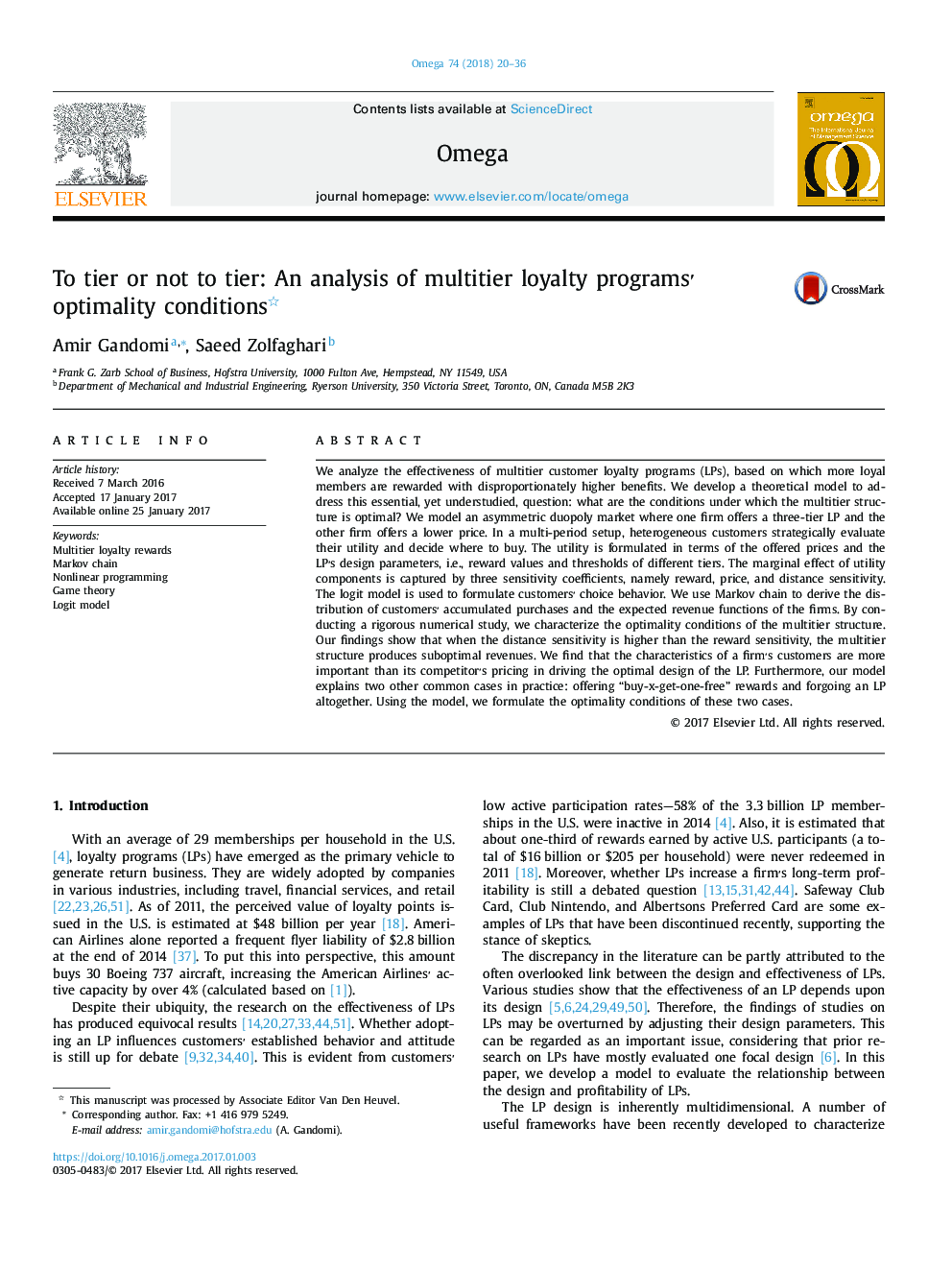| Article ID | Journal | Published Year | Pages | File Type |
|---|---|---|---|---|
| 7436817 | Omega | 2018 | 17 Pages |
Abstract
We analyze the effectiveness of multitier customer loyalty programs (LPs), based on which more loyal members are rewarded with disproportionately higher benefits. We develop a theoretical model to address this essential, yet understudied, question: what are the conditions under which the multitier structure is optimal? We model an asymmetric duopoly market where one firm offers a three-tier LP and the other firm offers a lower price. In a multi-period setup, heterogeneous customers strategically evaluate their utility and decide where to buy. The utility is formulated in terms of the offered prices and the LP׳s design parameters, i.e., reward values and thresholds of different tiers. The marginal effect of utility components is captured by three sensitivity coefficients, namely reward, price, and distance sensitivity. The logit model is used to formulate customers׳ choice behavior. We use Markov chain to derive the distribution of customers׳ accumulated purchases and the expected revenue functions of the firms. By conducting a rigorous numerical study, we characterize the optimality conditions of the multitier structure. Our findings show that when the distance sensitivity is higher than the reward sensitivity, the multitier structure produces suboptimal revenues. We find that the characteristics of a firm׳s customers are more important than its competitor׳s pricing in driving the optimal design of the LP. Furthermore, our model explains two other common cases in practice: offering “buy-x-get-one-free” rewards and forgoing an LP altogether. Using the model, we formulate the optimality conditions of these two cases.
Related Topics
Social Sciences and Humanities
Business, Management and Accounting
Strategy and Management
Authors
Amir Gandomi, Saeed Zolfaghari,
